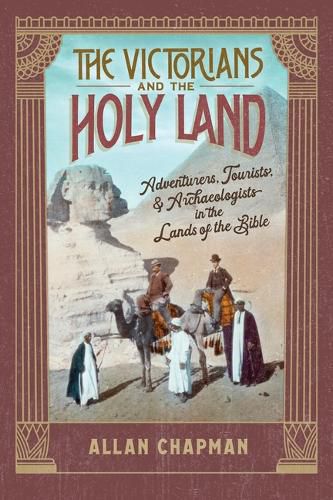Readings Newsletter
Become a Readings Member to make your shopping experience even easier.
Sign in or sign up for free!
You’re not far away from qualifying for FREE standard shipping within Australia
You’ve qualified for FREE standard shipping within Australia
The cart is loading…






Why were people in the Victorian age fascinated with the archaeological mysteries of the Holy Land? In this engaging study, Allan Chapman shows how the Holy Land took on new meaning for Europeans during the Victorian era. Previously, most Europeans had viewed the area between the Mediterranean Sea and the eastern bank of the Jordan River as a literary backdrop for biblical narratives. During the nineteenth century, however, they began to take interest in this region as a literal, physical place. Technological inventions such as steam-powered travel, telegraphy, and photography made the Holy Land more accessible. In public museums, ordinary people could view artifacts ranging from Egyptian mummies to statues from Nimrud and Nineveh. In linguistics, translations of Egyptian hieroglyphs and Assyrian cuneiform broadened Europeans' awareness of myths, legends, and history. These discoveries in archaeology and linguistics brought new energy to nineteenth-century debates about whether the Scriptures were based on factual history.
In addition to explaining how Holy Land studies changed during the Victorian era, Allan Chapman identifies key people who facilitated those changes. He introduces readers to a diverse demographic that includes adventurers, astronomers, missionaries, ministers, learned women of independent means, and Queen Victoria's eldest son. Driven by a wide range of professional and personal motives, these individuals had a powerful impact on the Victorian public's understanding of the Holy Land.
$9.00 standard shipping within Australia
FREE standard shipping within Australia for orders over $100.00
Express & International shipping calculated at checkout
Stock availability can be subject to change without notice. We recommend calling the shop or contacting our online team to check availability of low stock items. Please see our Shopping Online page for more details.
Why were people in the Victorian age fascinated with the archaeological mysteries of the Holy Land? In this engaging study, Allan Chapman shows how the Holy Land took on new meaning for Europeans during the Victorian era. Previously, most Europeans had viewed the area between the Mediterranean Sea and the eastern bank of the Jordan River as a literary backdrop for biblical narratives. During the nineteenth century, however, they began to take interest in this region as a literal, physical place. Technological inventions such as steam-powered travel, telegraphy, and photography made the Holy Land more accessible. In public museums, ordinary people could view artifacts ranging from Egyptian mummies to statues from Nimrud and Nineveh. In linguistics, translations of Egyptian hieroglyphs and Assyrian cuneiform broadened Europeans' awareness of myths, legends, and history. These discoveries in archaeology and linguistics brought new energy to nineteenth-century debates about whether the Scriptures were based on factual history.
In addition to explaining how Holy Land studies changed during the Victorian era, Allan Chapman identifies key people who facilitated those changes. He introduces readers to a diverse demographic that includes adventurers, astronomers, missionaries, ministers, learned women of independent means, and Queen Victoria's eldest son. Driven by a wide range of professional and personal motives, these individuals had a powerful impact on the Victorian public's understanding of the Holy Land.